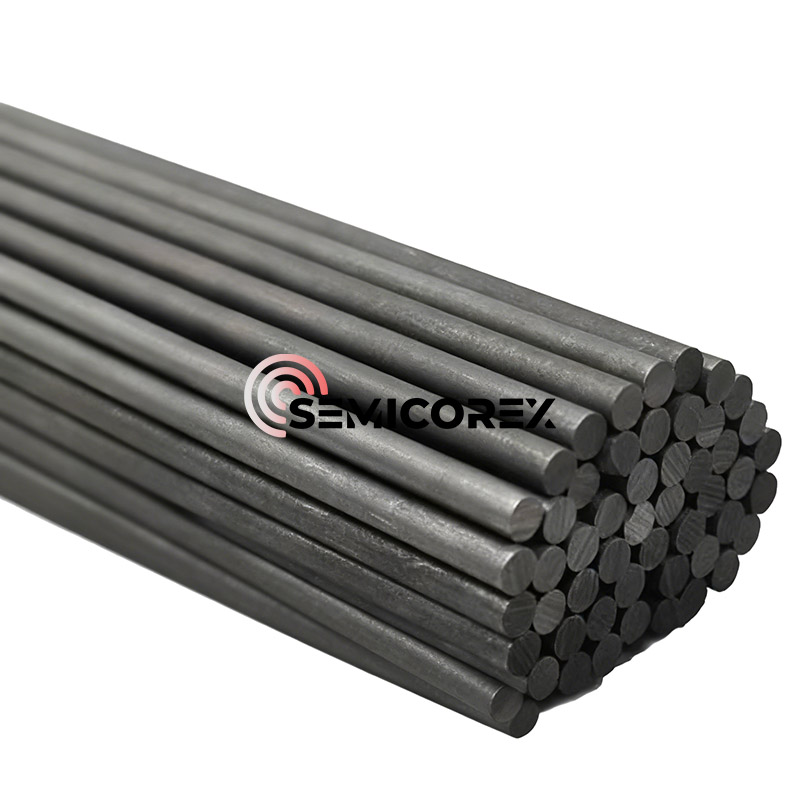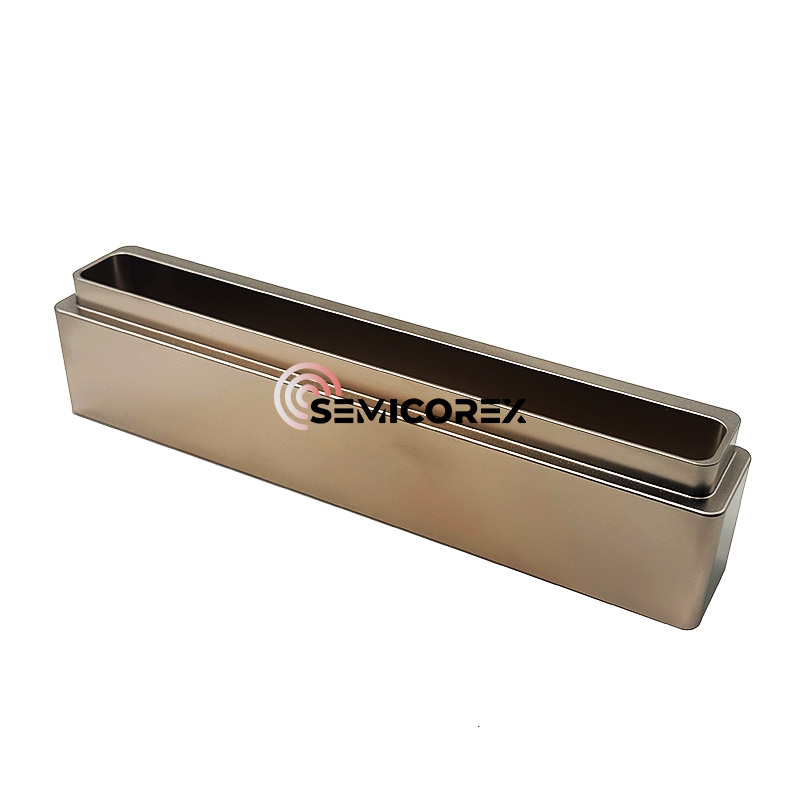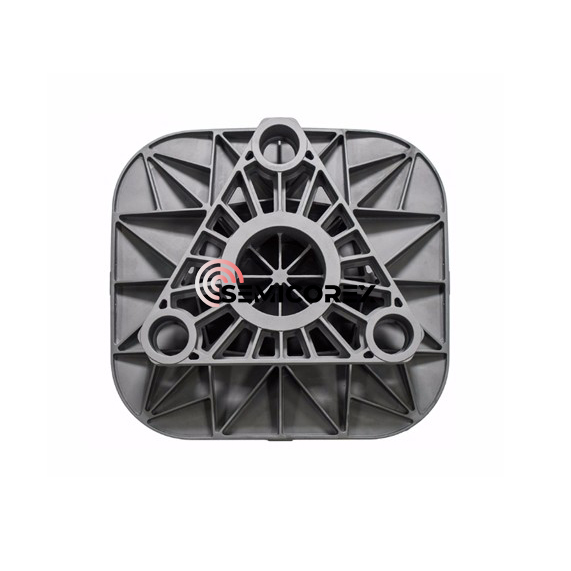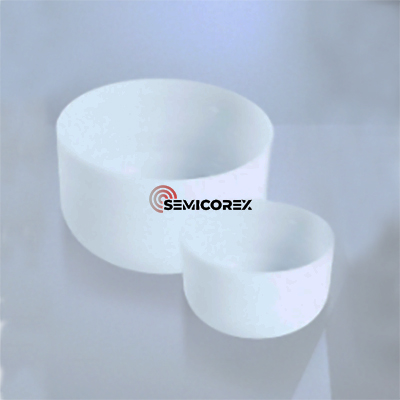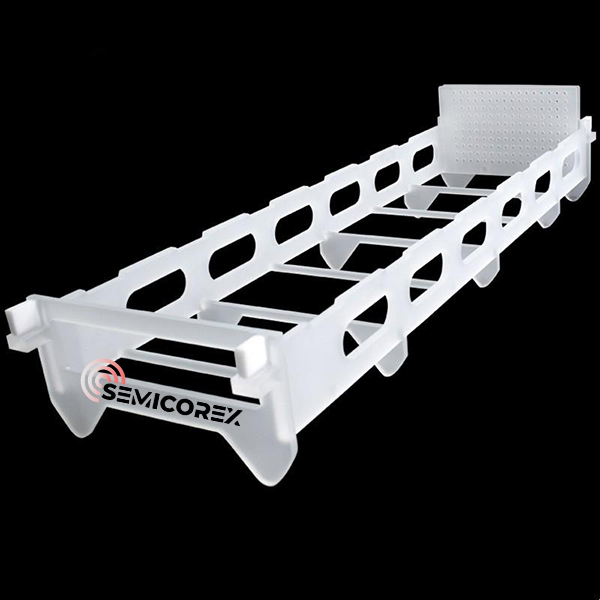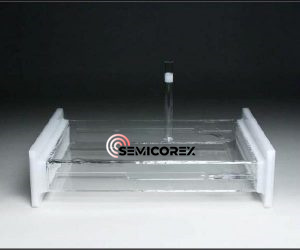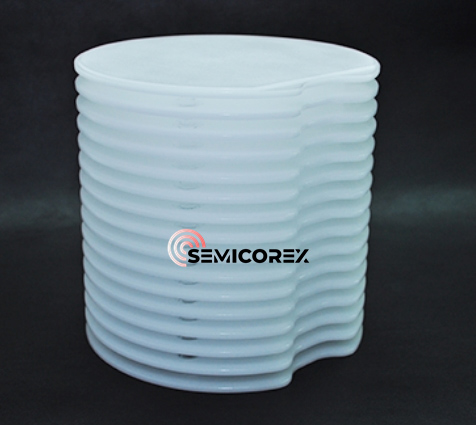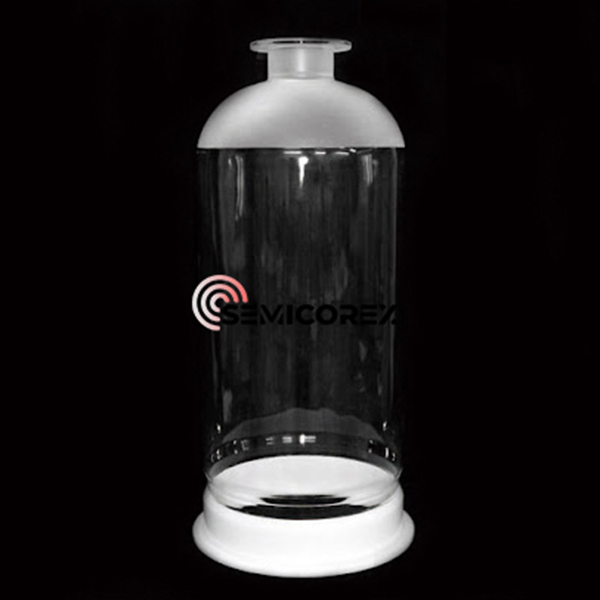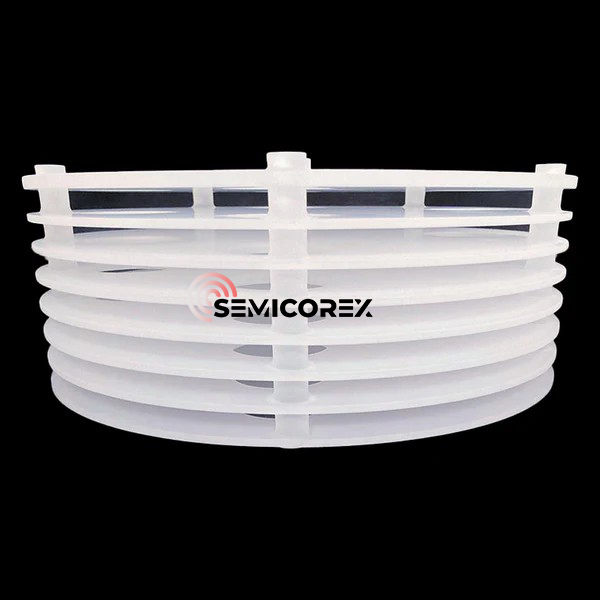
- English
- Español
- Português
- русский
- Français
- 日本語
- Deutsch
- tiếng Việt
- Italiano
- Nederlands
- ภาษาไทย
- Polski
- 한국어
- Svenska
- magyar
- Malay
- বাংলা ভাষার
- Dansk
- Suomi
- हिन्दी
- Pilipino
- Türkçe
- Gaeilge
- العربية
- Indonesia
- Norsk
- تمل
- český
- ελληνικά
- український
- Javanese
- فارسی
- தமிழ்
- తెలుగు
- नेपाली
- Burmese
- български
- ລາວ
- Latine
- Қазақша
- Euskal
- Azərbaycan
- Slovenský jazyk
- Македонски
- Lietuvos
- Eesti Keel
- Română
- Slovenski
- मराठी
- Srpski језик
Chiny Kwarc Producenci, Dostawcy, Fabryka
Quartz is a mineral composed of silicon dioxide, with the chemical formula SiO2. Pure quartz is colorless and transparent, but can appear in various colors due to trace amounts of pigment ions, finely dispersed inclusions, or the presence of color centers, which reduces its transparency. It has a vitreous luster and a greasy sheen on the fracture. Quartz products are widely used in semiconductor manufacturing, and high-purity quartz products are important consumables in wafer production.
The manufacturing process for quartz products is very complex. Quartz sand is first melted and smelted into quartz ingots, which are then heat-formed and cold-processed into quartz products. Based on the process and processing technology, quartz products can be divided into two types: fire-processed and machine-processed. Fire-processing is primarily used in the photovoltaic industry and has lower profit margins. Machine processing relies on different methods and combinations to complete shaping and polishing, primarily producing high-value-added products that require high consistency and stability, and is often used in the semiconductor industry.
Quartz components used in semiconductors can generally be divided into high-temperature and low-temperature components, respectively used in high-temperature processes such as diffusion and oxidation, and low-temperature processes such as etching, packaging, photolithography, and cleaning. Quartz components used in high-temperature processes, as they must operate continuously for hours at temperatures exceeding 1,000 degrees Celsius, require high-temperature resistance, excellent thermal stability, and resistance to deformation. The presence of hydroxyl groups alters the bonding structure of silicon dioxide, the primary component of quartz products, thereby reducing the material's thermal stability and significantly diminishing its high-temperature resistance. Therefore, quartz components used in high-temperature processes require dehydroxylation. Furthermore, these components must exhibit corrosion resistance, excellent light transmittance, and low impurity content. Quartz components used in low-temperature processes, on the other hand, do not require high-temperature processing, so the hydroxyl content of the quartz material is not a requirement.
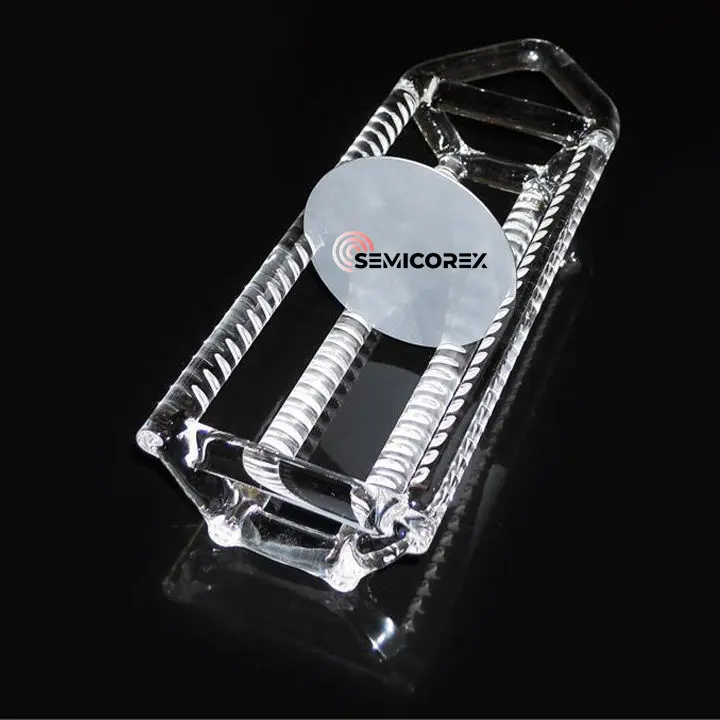
Quartz Boat
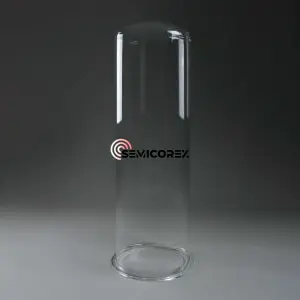
Quartz Tube
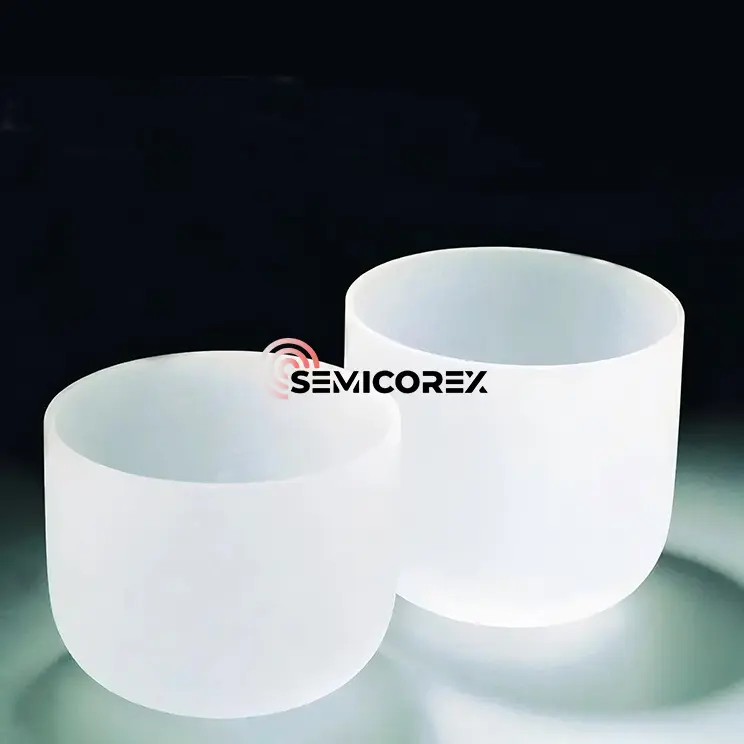
Quartz Crucible
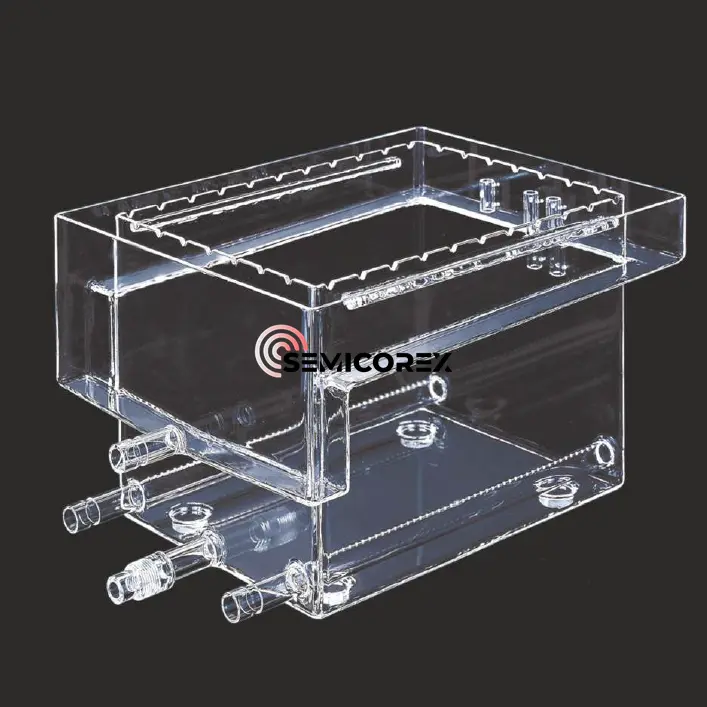
Quartz Tank/Bath
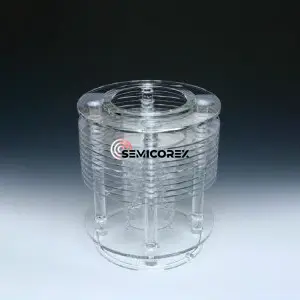
Quartz Pedestal
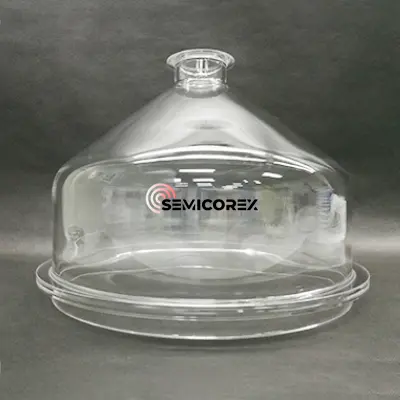
Quartz Bell Jar
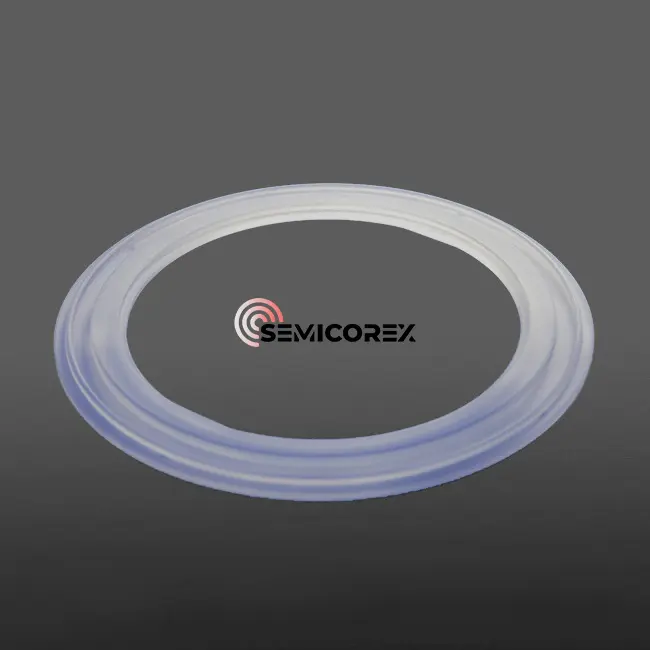
Quartz Ring
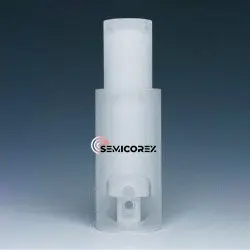
Other Quartz Parts
- View as
Tygiel kwarcowy
Tygiel kwarcowy Semicorex przeznaczony jest do stosowania w hodowli monokryształów materiałów półprzewodnikowych, zapewniając optymalną wydajność i jakość kryształów. Wybierz Semicorex ze względu na nasze doskonałe rzemiosło, precyzyjną inżynierię i zaangażowanie w dostarczanie produktów spełniających najwyższe standardy branżowe.*
Czytaj więcejWyślij zapytanieKwarcowy wspornik do łodzi waflowej
Uchwyt do łodzi Semicorex Quartz Wafer Boat Bracket jest niezbędnym elementem w produkcji płytek półprzewodnikowych i ogniw fotowoltaicznych, oferującym wyjątkowe właściwości materiałowe i cechy konstrukcyjne, zapewniające stabilność płytek i poprawiające wyniki procesu.
Czytaj więcejWyślij zapytanieKomora Kwarcowa
Komora kwarcowa Semicorex jest niezastąpionym narzędziem w procesach trawienia w produkcji półprzewodników i innych gałęziach przemysłu zaawansowanych technologii. Dzięki swoim unikalnym funkcjom i szerokiemu zakresowi zastosowań zapewnia doskonałą wydajność i niezawodność. Wybierając komorę kwarcową Semicorex, zapewniasz najwyższą jakość wyników trawienia, popartą naszym niezachwianym zaangażowaniem w innowacje i obsługę klienta. Ulepsz swoje procesy trawienia już dziś dzięki naszej zaawansowanej technologii komory kwarcowej.*
Czytaj więcejWyślij zapytanieWiadro z termosem kwarcowym
Wiadro termosowe Semicorex Quartz to niezbędne narzędzie zaprojektowane z myślą o skutecznej izolacji w przemyśle półprzewodników. Ten innowacyjny produkt został zaprojektowany tak, aby utrzymywać temperaturę krytycznych materiałów i rozwiązań, zapewniając optymalną wydajność podczas procesów produkcyjnych. Dzięki unikalnej konstrukcji i zaawansowanym materiałom, Quartz Thermos Bucket jest niezbędnym nabytkiem dla firm chcących zwiększyć swoją wydajność operacyjną i jakość produktu.*
Czytaj więcejWyślij zapytanieKwarcowy dzwonek o wysokiej czystości
Zaprojektowany, aby zapewnić niezrównaną wydajność w ekstremalnych warunkach, słoik Semicorex High Purity Quartz Bell Jar łączy w sobie wyjątkowe właściwości materiału, aby spełnić rygorystyczne wymagania produkcji półprzewodników.**
Czytaj więcejWyślij zapytanieCokół z topionego kwarcu
Podstawa z topionego kwarcu została specjalnie zaprojektowana do stosowania w procesach osadzania warstwy atomowej (ALD), niskociśnieniowego chemicznego osadzania z fazy gazowej (LPCVD) i procesach dyfuzyjnych, zapewniając równomierne osadzanie cienkich warstw na powierzchni płytek.**
Czytaj więcejWyślij zapytanie
